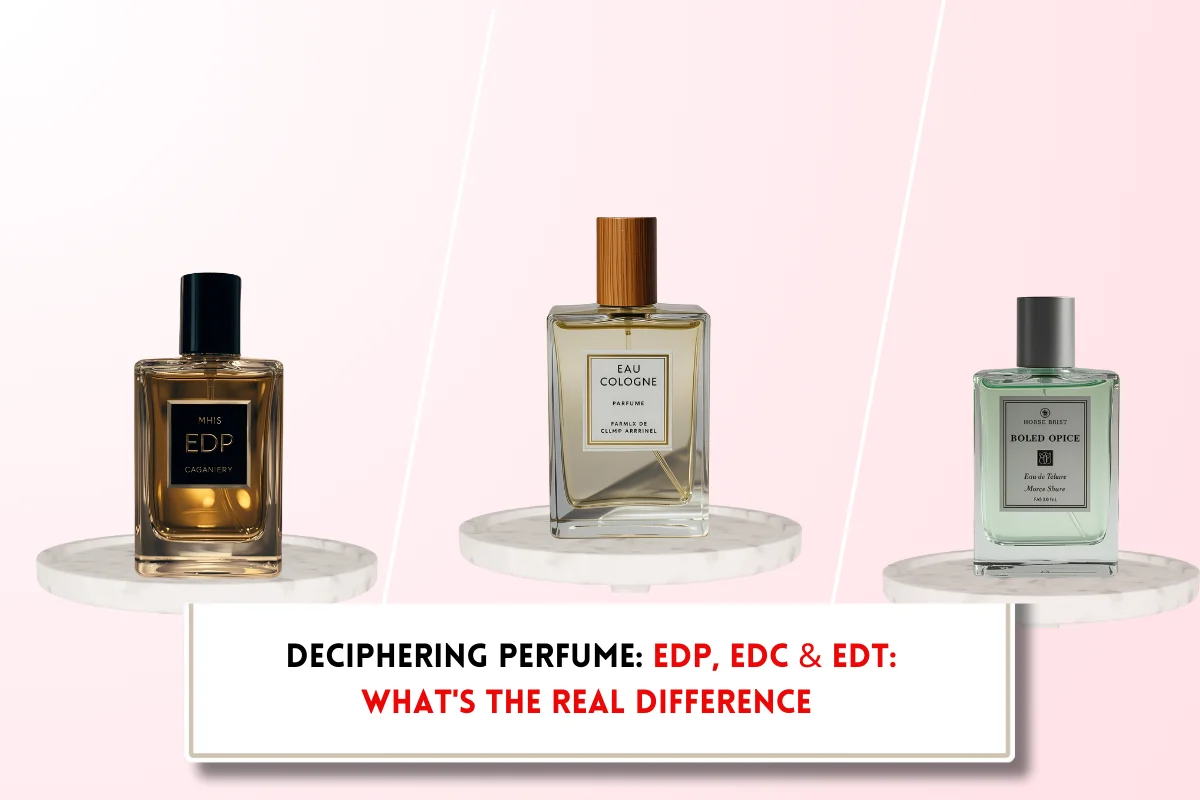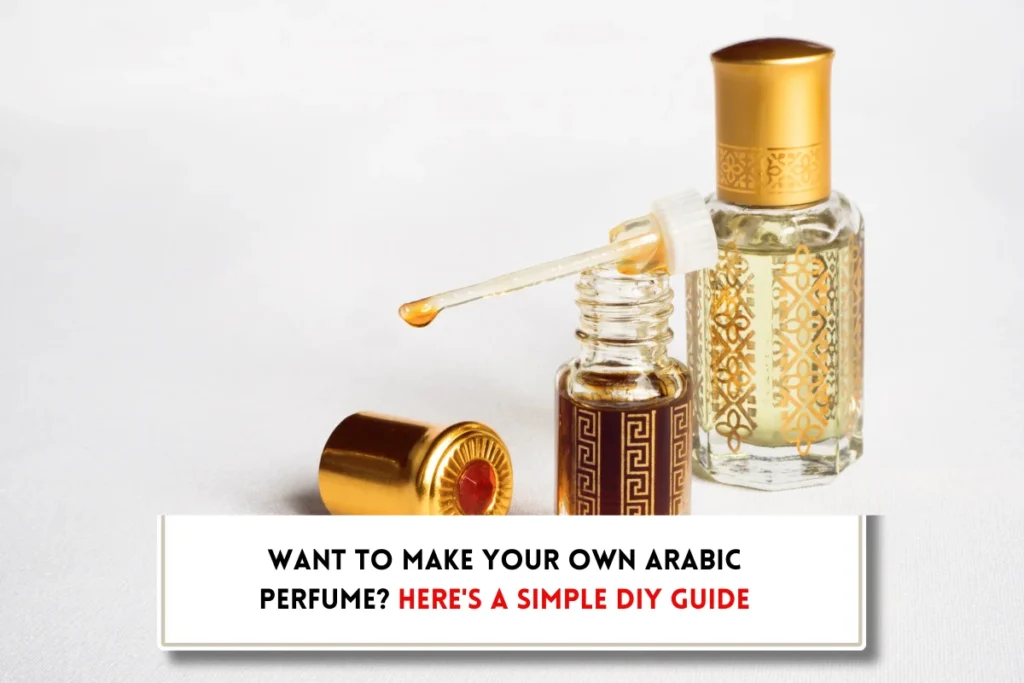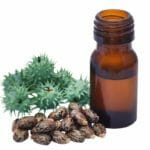Unveiling the secrets of how to create perfume oil?
At BeautyCaters, our expert team independently curates every recommended product. Purchases through our links may earn us a commission. Explore our transparent selection process.
Ever been utterly captivated by a fragrance, wishing you could bottle its soul or even dream up your own signature scent? That’s the magic of perfume oils! These potent elixirs, born from the time-honored art of blending precious botanicals and aromatic wonders, hold the key to a deeply personal and enduring scent experience. The exciting news? You absolutely can create your very own fragrance oil! Join us as we gently peel back the layers and unveil the fascinating secrets of how to create perfume oil – exploring the artistry, the essential ingredients for perfume making, and the sheer magic that makes these concentrated scents so utterly captivating.
- The history of perfume oil
- Unveiling the symphony of fragrance notes
- The art of crafting exquisite perfume oils
- How do you pick the right oils to go together?
- The art of harmonious blending: How to create perfume oil?
- The Perfumer's Formula: Secrets to blending your own exquisite perfume oil
- Decoding the numbers: A gentle foray into ‘Perfume Math’
- The secret behind long-lasting fragrance of perfume oils
- Factors affecting fragrance longevity of perfume oils
- Final word
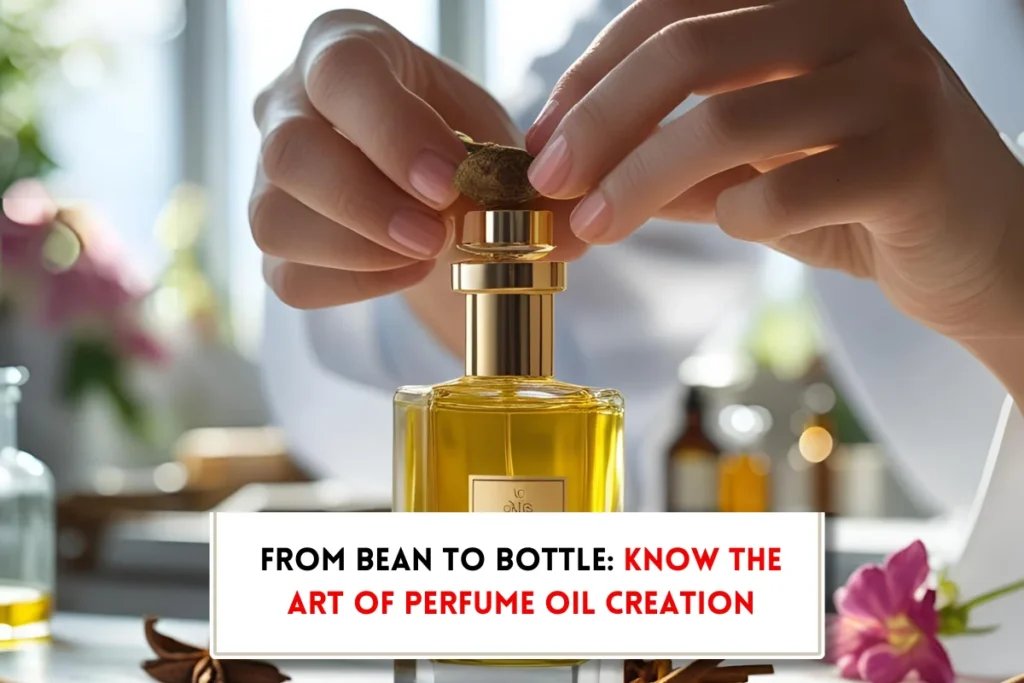
The history of perfume oil
For millennia, these fragrant elixirs have woven their way through human culture, their story stretching back to the mists of ancient civilizations like Egypt and Mesopotamia. Far from a modern indulgence, fragrance oils held profound significance. Imagine the ancient Egyptians, believing these precious scents were gifts from the gods, using them in sacred rituals and even the intricate mummification processes. These weren’t just about smelling good; they were deeply intertwined with their spiritual beliefs.
As trade routes unfurled across the Middle East and Europe, so too did the allure of natural perfume oils. This exchange wasn’t just about goods; it was a diffusion of fragrant knowledge, a gradual evolution into the sophisticated art of perfumery we cherish today. From sacred anointing oils to personal adornment, these concentrated scents have captivated and defined cultures for thousands of years – a testament to their enduring power and timeless appeal.
Also Read: Why does mascara hurt my eyes?
Unveiling the symphony of fragrance notes
Ever wondered what makes a perfume sing its unique song on your skin? It’s all about the fascinating interplay of fragrance notes, individual voices carefully orchestrated in a harmonious choir, creating a fragrant journey for your senses. We can broadly categorize them into three key stages: the initial invitation of the top notes, the heart and soul revealed by the heart notes, and the lingering embrace of the base notes.
The bright and breezy overture: Top notes
Imagine the first impression a perfume makes – that’s the magic of the top notes, also known as the opening notes. These are the light, zesty, and often volatile aromas that greet your nose immediately after a spritz. Think of them as the sparkling introduction to a captivating story. They’re designed to be attention-grabbing but don’t stick around for long, typically fading within the first 15 minutes to an hour.
Picture the invigorating burst of citrus fruits like bergamot, lemon, and grapefruit, the delicate freshness of certain flowers, or the clean, green lift of aromatic herbs. These are the fleeting but crucial elements that provide that initial burst of freshness and intrigue.
The heart of the matter: Heart notes
As the initial sparkle of the top notes begins to subside, the heart notes, or middle notes, step into the spotlight. These form the core and character of the fragrance, revealing its true personality. They are more substantial and complex than the top notes and typically last for several hours.
This is where the main theme of the perfume unfolds. You’ll often encounter rich floral notes like rose, jasmine, and ylang-ylang, juicy fruity accords like berries or peach, or warm and inviting spices such as cinnamon or cardamom. The heart notes are the glue that binds the lighter top notes with the deeper base notes, creating a balanced and distinctive scent.
The lingering embrace: Base notes
Finally, as the heart notes gracefully fade, the base notes emerge, leaving a lasting impression. These are the deep, rich, and tenacious aromas, which anchor the fragrance with longevity and a sense of depth. They are the foundation upon which the entire scent profile rests and can linger on your skin for many hours, even a full day.
Think of the warm, comforting embrace of woody notes like sandalwood, cedarwood, and vetiver, the sensual allure of musky tones, or the sweet, grounding richness of vanilla, patchouli, or amber. Base notes are what give a perfume its staying power and contribute significantly to its overall character and sillage (the trail it leaves behind).
The art of crafting exquisite perfume oils
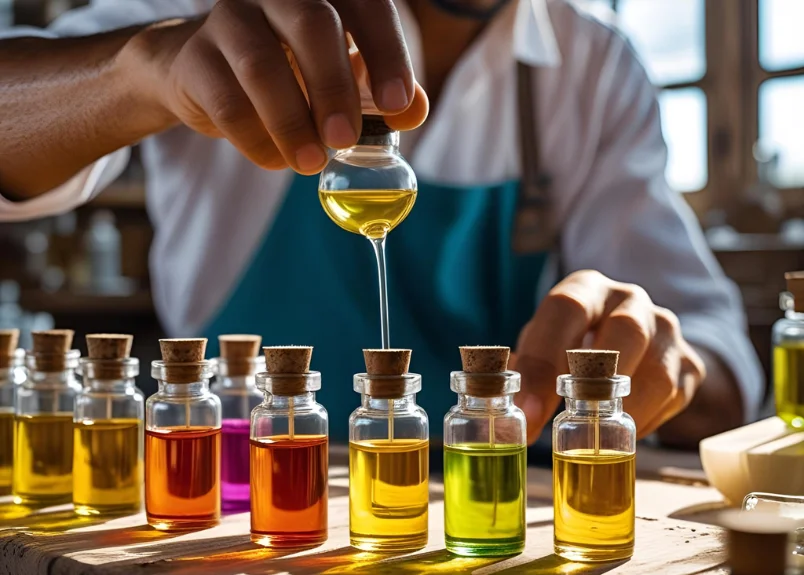
The creation of a truly exceptional perfume oil is akin to an art form, a delicate dance of blending aromatic materials in precise proportions to achieve a desired olfactory masterpiece. It’s a fascinating journey that involves thoughtful selection and skillful combination of diverse fragrant ingredients and ingenuity of scientific innovation.
For instance, plants, in their myriad forms, offer an incredible spectrum of scents. Delicate flowers like rose, jasmine, and tuberose contribute heady, romantic notes, while vibrant fruits such as bergamot, orange, and blackcurrant lend their juicy, refreshing facets. The warm, exotic character of spices like cinnamon, cardamom, and clove adds depth and intrigue. These natural ingredients, extracted through various methods, bring an unparalleled complexity and richness to a fragrance profile, often carrying subtle nuances and terroir that synthetic counterparts can only attempt to replicate.
While nature provides an abundant palette, the advent of synthetic ingredients has revolutionized the world of perfumery, offering a wider range of olfactory possibilities. These meticulously crafted molecules can faithfully reproduce natural scents that are difficult or impossible to extract efficiently or sustainably. Furthermore, they enable the creation of entirely novel aroma profiles, pushing the boundaries of olfactory artistry. Synthetic ingredients can also enhance the longevity, stability, and projection of a fragrance. They allow perfumers to achieve specific effects, add unique textures, and build accords that would be unattainable using only natural sources.
The true artistry lies in the harmonious integration of both natural and synthetic ingredients. A skilled perfumer understands the unique characteristics of each material, and how they interact with one another. They leverage the complexity and depth of naturals while harnessing the precision and innovation of synthetics to craft scents that are both captivating and enduring. The formulation of a perfume oil is therefore a testament to both the beauty of the natural world and the ingenuity of human creativity, resulting in olfactory experiences that enrich our lives.
How do you pick the right oils to go together?
With so many captivating scents to choose from, how do you know which oils will harmonize to create your perfect signature aroma? The truth is, the ultimate decision is deeply personal, a reflection of your individual preferences and the olfactory story you wish to tell.
Think about the perfumes that have captivated you in the past. Do you gravitate towards the grounding embrace of woody notes, the bright zest of citrus, the delicate romance of florals, or the sensual allure of musk? Understanding your existing scent inclinations is the first step in your blending adventure.
Finding your olfactory muse: A whimsical approach
Sometimes, inspiration can come from unexpected places. Consider the essence of individuals, real or imagined, who embody a certain characteristic or era. As our in-house enthusiast playfully suggests, picturing historical figures and their likely olfactory preferences can be a fun starting point. Imagine Marie Antoinette enveloped in a bouquet of opulent florals, or Queen Elizabeth I finding solace in the herbaceous calm of marjoram. This imaginative exercise can spark unique and intriguing combinations.
Ultimately, the most “scientific” approach is to explore the scents that personally resonate with you. Consider the individual notes you find appealing and select a few oils based on this initial attraction. To get you started, here are some classic fragrance families and examples of oils that often blend beautifully within them:
- For the lovers of the forest floor: The grounding warmth of Cedarwood, the crisp freshness of Pine, the creamy sophistication of Sandalwood.
- For those who adore blooming gardens: The intoxicating sweetness of Jasmine, the timeless elegance of Rose, the exotic richness of Ylang Ylang.
- For a bright and zesty awakening: An uplifting tang of Grapefruit, the sunny vibrancy of Orange, the elegant zest of Bergamot.
- For an earthy and sensual connection: The smoky depth of Vetiver, the animalic warmth of Musk.
- For a touch of nature’s pharmacy: The invigorating clarity of Rosemary, the calming tranquility of Lavender, the gentle comfort of Chamomile.
- For a spark of warmth and intrigue: The stimulating bite of Black Pepper, the cozy warmth of Clove, the zesty heat of Ginger.
- For a sweet and comforting embrace: A warm, honeyed depth of Amber, the creamy sweetness of Vanilla.
The art of harmonious blending: How to create perfume oil?
As you begin to experiment, start with just a few oils. Introduce them to each other drop by drop, carefully noting how their aromas intertwine. Remember that less is often more, especially when you’re first exploring. Allow the blend to sit for a few moments, as the initial sharp notes will begin to meld and reveal their true character.
Trust your nose and your instincts. There are no rigid rules in this fragrant adventure. The perfect combination is the one that delights your senses and resonates with your unique style. So, embrace the exploration, allow your imagination to guide you, and discover the captivating symphony of scents that awaits your personal touch.
The Perfumer’s Formula: Secrets to blending your own exquisite perfume oil
So, you’ve chosen your aromatic stars – the grounding base, the captivating heart, and the sparkling head notes. Now comes the magical moment of bringing them together to create your own signature scent. But before the fragrant alchemy begins, there’s a fundamental principle to understand: the order of addition matters. Like building a sturdy pyramid, you’ll want to lay your foundation first.
The Golden Rule: Base First, Heart Second, Head Last. This sequential layering allows the different molecular weights of the oils to blend harmoniously, ensuring a smooth and evolving fragrance profile.
Today, we’re embarking on a delightful experiment: crafting a 5ml bottle of pure perfume oil. Why perfume oil, you ask? For those who appreciate a more intimate and long-lasting scent experience, it’s a true gem. Unlike alcohol-based perfumes that can project intensely (and sometimes overwhelm), perfume oils, lovingly blended with skin-nourishing carriers like Jojoba or Sweet Almond Oil (the choice is yours!), tend to stay closer to the skin, creating a captivating aura that invites others to lean in. This makes them particularly wonderful for those sensitive to strong fragrances or prone to headaches.
And let’s talk longevity. Perfume oils often outshine their alcohol-based counterparts significantly, lingering on the skin for an impressive 5 to 12 hours, depending on the potency of your chosen ingredients. Compare that to the often fleeting 2-hour lifespan of an eau de parfum, and the value becomes beautifully apparent. Plus, you’ll never be that person overdoing it with the scent cloud!
Decoding the numbers: A gentle foray into ‘Perfume Math’
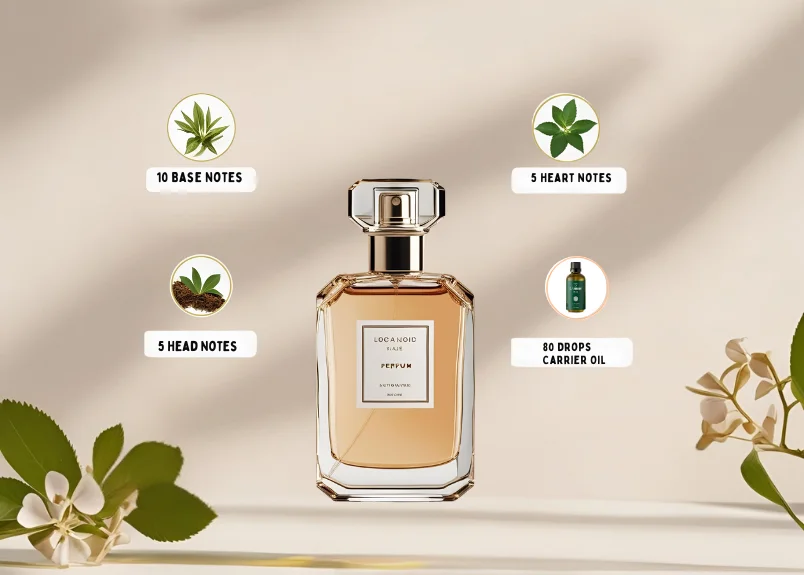
Ah, numbers. Even in the realm of artistic creation, a touch of mathematical precision helps us achieve olfactory harmony. But fret not, dear reader – it’s more akin to a simple recipe than complex calculus (and as a fellow lover of language, I assure you, we’ll navigate this together!).
Here’s the breakdown for our 5ml perfume oil creation:
- Volume: 5ml
- Approximate Drops per ml: 20 drops (using a pipette or glass dropper)
- Total Drops in our 5ml Bottle: 5ml x 20 drops/ml = 100 drops
- These 100 drops will comprise your fragrant blend and the carrier oil. Now, let’s consider the classic ratio of fragrance notes:
- Ratio: 2 parts Base: 1 part Heart: 1 part Head: The Remainder is Carrier Oil
- The concentration of fragrance oils in perfume oils can vary widely, from a delicate 20% to a potent 80%. For our introductory lesson, let’s aim for a lovely, balanced 20% fragrance concentration.
- Total Fragrance Drops (20% of 100 drops): 0.20 x 100 drops = 20 drops
- Total Carrier Oil Drops: 100 total drops – 20 fragrance drops = 80 drops
- Now, applying our note ratio to these 20 fragrance drops:
- Base Notes (2 parts): (2 / 4) x 20 drops = 10 drops
- Heart Notes (1 part): (1 / 4) x 20 drops = 5 drops
- Head Notes (1 part): (1 / 4) x 20 drops = 5 drops
Our Basic Formula: 10 drops Base Notes + 5 drops Heart Notes + 5 drops Head Notes + 80 drops Carrier Oil = 100 drops of pure fragrant magic!
We did it! The numbers have been conquered! Now, the real artistry can truly unfold.
A gentle nudge towards olfactory freedom: Remember, this formula is a wonderful starting point, a guiding star in your fragrant journey. Once you understand the basic ratios and drop counts, feel free to experiment! Perhaps a particular base note calls to you more strongly, or you want a brighter, more prominent head note. You might find that a blend of 12 drops of base, 5 drops of heart, and 3 drops of head creates the exact symphony you desire. The strength and character of your chosen oils will ultimately guide you. The key is to trust your nose and embrace the beautiful world of olfactory experimentation.
The secret behind long-lasting fragrance of perfume oils
The secret to a truly enduring fragrance often lies in the captivating world of perfume oils. For those who desire a scent that stays with them, perfume oils offer a compelling and luxurious alternative. But what make them so long-lasting? Let’s delve into the fascinating factors that contribute to their remarkable longevity.
The power of pure essence
Imagine the difference between a diluted watercolor and a vibrant oil painting. Perfume oils, in essence, are the oil paintings of the fragrance world. They boast a significantly higher concentration of aromatic compounds compared to their alcohol-based counterparts like Eau De Toilette or Eau De Parfum. This concentrated essence translates directly into a more potent and long-lasting scent. Just a delicate dab or a light spritz can unleash a rich tapestry of aroma that gracefully unfolds on your skin for hours, making every drop count.
The beauty of slow evaporation
Think of a fleeting summer rain versus a gentle, persistent dew. Alcohol-based perfumes, with their volatile nature, evaporate rapidly upon contact with the skin, carrying the fragrance molecules away quickly. Perfume oils, however, possess a slower evaporation rate. Their oily base acts as an anchor, allowing the fragrant molecules to linger and release their captivating notes gradually throughout the day. This unhurried diffusion ensures that the scent remains vibrant and intact, preventing a swift and disappointing fade-out.
An olfactory evolution
One of the most enchanting qualities of perfume oils is their dynamic interaction with your skin. Unlike the often linear scent profile of alcohol-based perfumes, perfume oils evolve and reveal different layers over time. As the oil warms with your body heat and interacts with your unique chemistry, the distinct top, heart, and base notes unfold in a captivating sequence. This gradual unveiling creates a more personalized and complex olfactory journey, making the experience of wearing a perfume oil deeply intimate and intriguing.
The art of adhesion
Imagine a drop of water on a smooth surface versus a drop of oil – the oil clings. The composition of perfume oils, notably the absence of alcohol, contributes significantly to their superior scent retention. Without the rapid evaporation caused by alcohol, the fragrance molecules in perfume oils have a greater affinity for your skin. They bind more effectively, creating a lasting aromatic veil that stays with you, offering hours of continuous olfactory pleasure.
The magic of skin chemistry
Perhaps the most personal aspect of perfume oils is their unique dance with your individual skin chemistry. Your body’s natural heat, sebum production, and even your dietary habits can subtly alter how a perfume oil smells on you compared to someone else. This fascinating interaction means that the same perfume oil can develop a slightly different, yet equally beautiful, character on each wearer. This inherent personalization is a key reason why perfume oil enthusiasts often feel a deeper connection to their chosen scents – they truly become “their” own.
In a world where fleeting moments are common, perfume oils offer the promise of a scent that endures, a fragrant companion that evolves with you throughout the day, and a personal aromatic signature that is uniquely yours. They are a testament to the power of concentrated essence and the beautiful interplay between fragrance and skin.
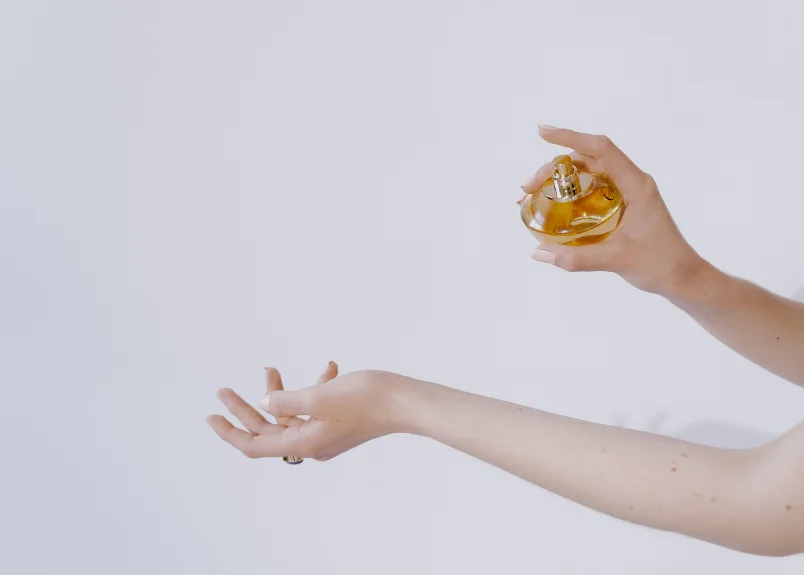
Factors affecting fragrance longevity of perfume oils
The longevity of fragrance is a result of various factors that make perfume oils an excellent choice for those seeking enduring scents.
- The subtle dance: While the concentrated essence of perfume oils often translates to impressive longevity, the duration of their captivating aroma on your skin isn’t set in stone. Like a delicate dance between the fragrance and its wearer, several intriguing factors can influence just how long that beautiful scent story unfolds. Let’s explore these nuances to help you maximize your olfactory experience.
- The quality of perfume oils: Imagine building a house with premium materials versus inexpensive ones – the difference in durability is undeniable. Similarly, the quality of the perfume oil itself is a cornerstone of its staying power. High-caliber oils, meticulously crafted from the finest natural and synthetic ingredients, tend to possess a richer, more complex structure that allows the fragrance to endure. Choosing perfume oils from reputable brands and trusted suppliers ensures you’re investing in a composition designed for longevity and a more nuanced scent journey. Compromising on quality can often lead to a fragrance that fades prematurely, leaving you wanting more.
- Application technique matters: Where and how you apply your perfume oil can significantly impact its staying power. Think of your pulse points – your wrists, neck, behind your ears, and even the crooks of your elbows – as natural fragrance diffusers. These areas generate subtle heat, which gently warms the oil and helps to gradually release its aromatic molecules throughout the day. The technique of application also plays a role. Instead of vigorously rubbing the oil into your skin (which can break down the fragrance molecules), a gentle dab allows the oil to meld with your skin naturally, preserving its integrity and prolonging its release.
- Skin type and pH level: Your skin is a unique landscape, and its characteristics can influence how perfume oils behave. Oily skin tends to have a natural affinity for fragrance molecules, allowing them to adhere more effectively and last longer. In contrast, dry skin may absorb the oil more quickly, leading to a faster dissipation of the scent. Similarly, your skin’s natural pH level can interact with the fragrance composition, subtly altering its longevity and even its scent profile. Understanding your skin type can guide you in choosing perfume oils and determining the need for reapplication throughout the day.
- Temperature, Humidity, and Airflow: The world around you can also play a role in how long your perfume oil graces your skin. Higher temperatures and humidity can energize the fragrance molecules, potentially leading to a faster evaporation rate. While this might initially amplify the scent, it can also mean it fades more quickly. Conversely, cooler environments can help to slow down the evaporation process, allowing the fragrance to linger for a more extended period. Even the air circulation around you can make a difference. In well-ventilated areas, the fragrance might diffuse more subtly and gradually, while in enclosed spaces, it could become more concentrated but potentially dissipate faster due to less interaction with your skin’s heat.
Final word
So, there you have it – the enchanting journey of perfume oil creation unveiled! From selecting exquisite essential oils and carrier bases to the art of blending and the patient maceration process, you now hold the key to crafting your own signature scents. Embrace this fragrant adventure, experiment with different notes, and unlock a world of personalized aromas that truly reflect your essence. Share your olfactory creations with us in the comments below!


